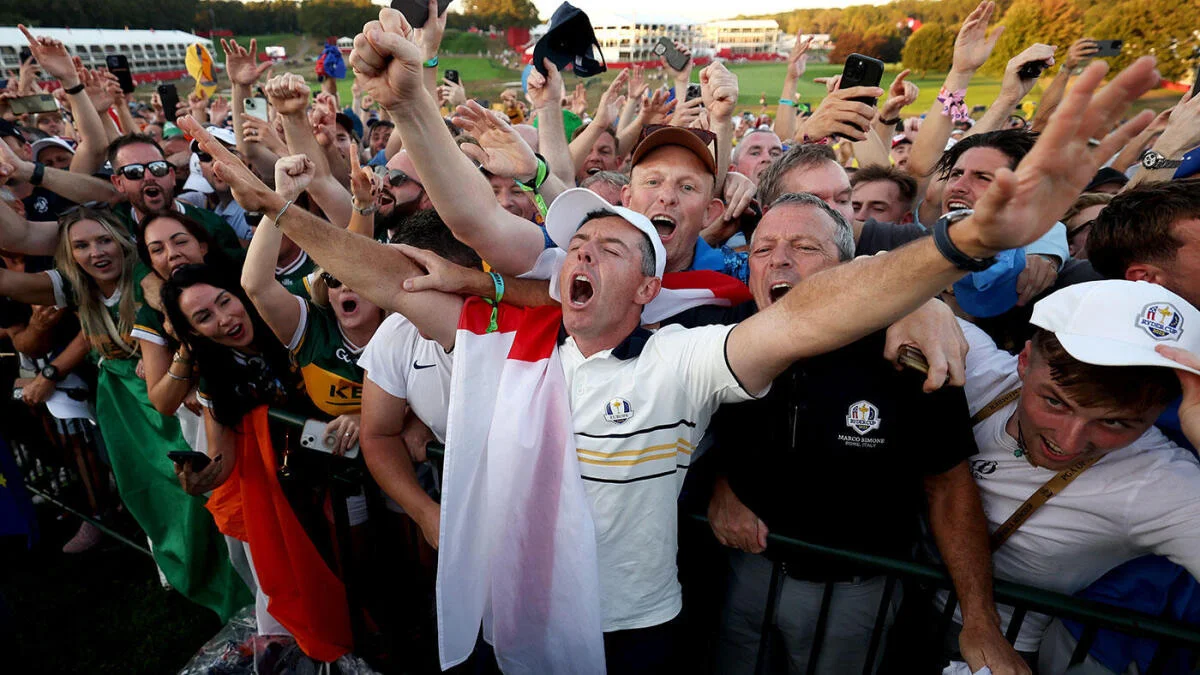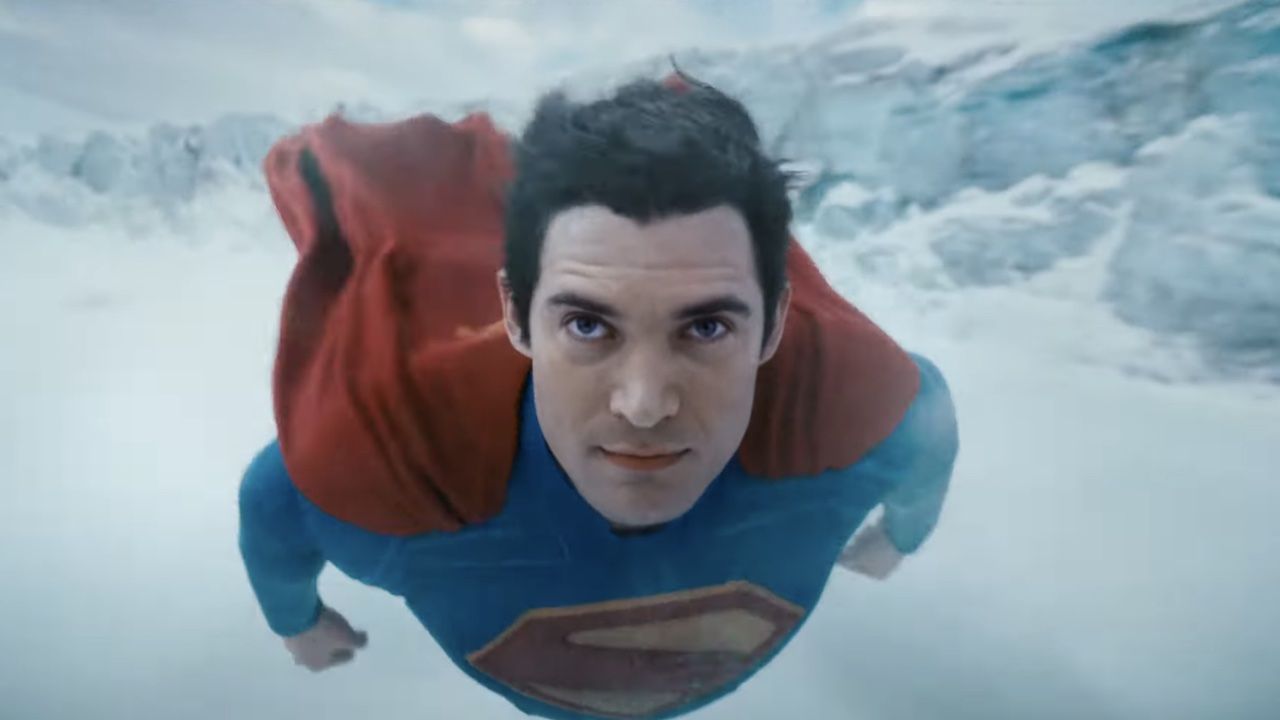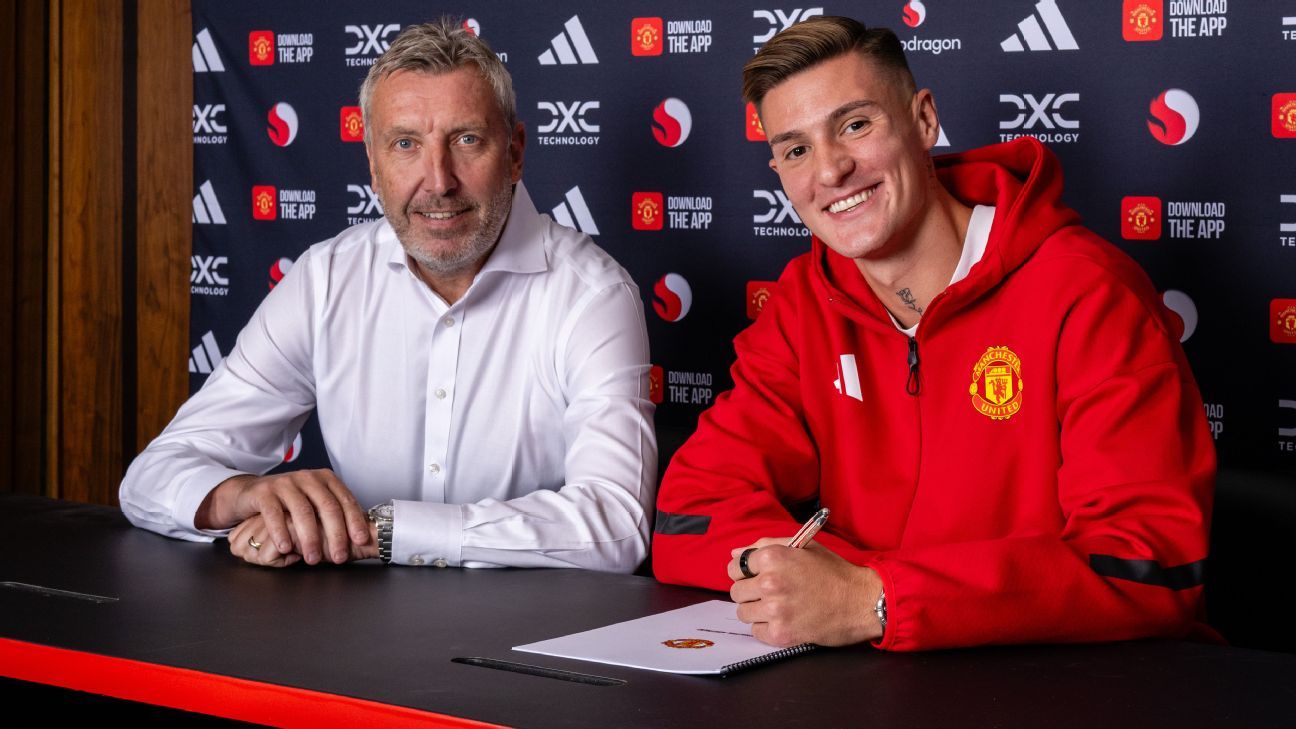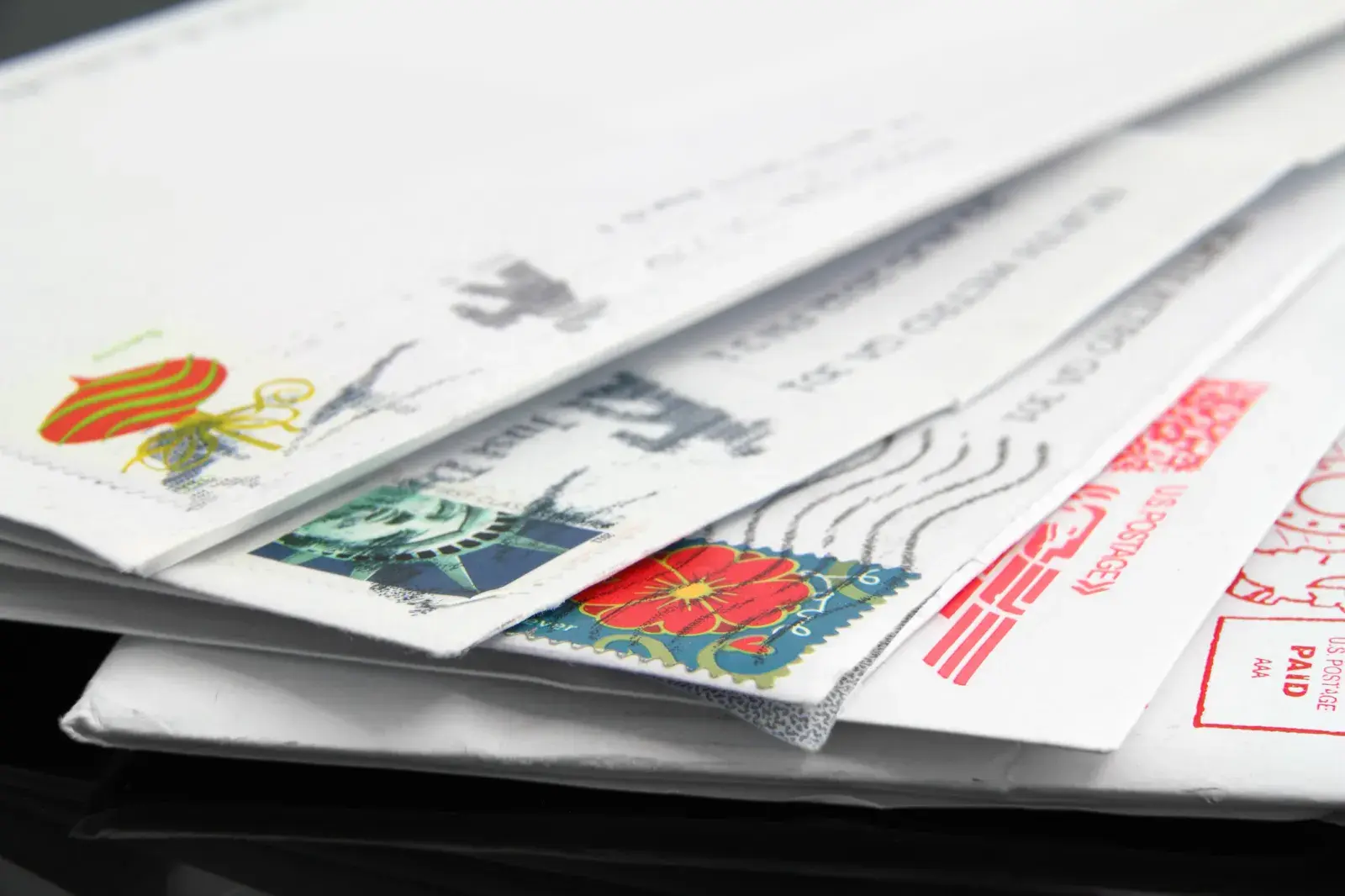
FARMINGDALE, N.Y. — While walking the fairways and marching up and down the hills of Bethpage Black last weekend, a quote from captain Keegan Bradley at his introductory press conference 15 months ago kept coming to mind. It had nothing to do with those playing inside the ropes and everything to do with those who would be tasked with placing the 12 Americans players in the best position to succeed.
“I’m going to take a fresh look at vice captains; they’re going to be a lot younger, closer to playing,” Bradley said. “I’m going to be out there with the guys. I’m going to be playing in the same tournaments they’re going to be playing in. I’m going to be playing in majors with them. I’m going to be playing week to week; I’ll be alongside these guys in the locker room, practice rounds, dinner.
“As opposed to in the past with Ryder Cup, they got to fly in, they got to schedule all these things, and I’m going to have a year of being with the guys as a peer. And one thing that is important to me is I want to play on the team. I feel as though I’m still in the prime of my career and can make this team. So, you know, it’s a great honor that my peers chose me to do this, and you know, I don’t have the experience that a lot of the other captains had, but I know these guys really well. I’m connected to these guys, and I see ’em week-to-week.”
Like much of his lead-up to the 2025 Ryder Cup, Bradley kept his promise when it came to the leadership composition of the U.S. side. He tapped Webb Simpson, Kevin Kisner, Gary Woodland, Brandt Snedeker and Jim Furyk to serve as his right-hand men in a decision that sounded great in theory but played out horribly in practice, a theme for what ultimately transpired at Bethpage Black.
United States Ryder Cup team leadership
RoleNameRyder Cups playedRyder Cups in leadership role
Captain
Keegan Bradley
2
0
Vice captain
Webb Simpson
3
0
Vice captain
Brandt Snedeker
2
0
Vice captain
Kevin Kisner
0
0
Vice captain
Gary Woodland
0
0
Vice captainJim Furyk9
4
Don’t mistake the 15 to 13 final score for believing this Ryder Cup was actually close. It was one cohesive team obsessed with continuity and process versus another that threw spaghetti against the wall. One side conjured up hypotheses, tested theories and put their best practices in play, while the other possessed little experience and unsuccessfully tried to turn over a new leaf.
“I think what’s great about 11 of the 12 — and obviously Rasmus [Højgaard] was there in a decent capacity last time as well — [is the continuity],” Shane Lowry said prior tot he Ryder Cup. “… Also, we have a lot of continuity like in the backroom setup as well, whether it be the captains, vice captains, and the people we’re using in the background, as well. So, I think it’s just going to be an easier kind of get together for the team when we all come together, we all feel as one pretty quickly. Whereas sometimes it can be kind of hard to do that when you play an individual sport all year to come together and all be one together quite soon. I think that’s what’s great about the continuity we have from the last one.”
Europe Ryder Cup team leadership
RoleNameRyder Cups playedRyder Cups in leadership role
Captain
Luke Donald
4
3
Vice captain
José María Olazábal
7
5
Vice captain
Thomas Bjorn
3
6
Vice captain
Edoardo Molinari
1
1
Vice captain
Francesco Molinari
3
1
Vice captainAlex Noren10
The U.S. team played its butts off Sunday to make this Ryder Cup a lot closer than it should have been. The Americans nearly pulled off the impossible, but the performance on the final day of the competition only further emphasized the catastrophic failure of their efforts across the first four sessions.
Losing just one match across the 11 that were played Sunday, the U.S. proved it had the players to compete and beat the Europeans. It also proved that significant work needs to be done in terms of process from the top down to contend every two years. Europe has won nine of 12 Ryder Cups played this century.
It all starts with the higher ups at the PGA of America, moving down to the selection criteria for Ryder Cup captain. (Perhaps at least holding a single interview is a start.) Something needs to change for the red, white and blue, not just to provide a spark for 2027 — the United States always appears focused on what’s next — but an everlasting change that will improve the program in the long term.
Let’s dive into some other takeaways from the 2025 Ryder Cup.
Control the controllables
Ryder Cups are won on the back of the players — make no mistake about it — but players need to be put in the best possible position by their skippers, not only at the golf course but away from it. Europe captain Luke Donald revealed some of the steps he took to improve the team hotel Sunday night following the win.
“My job is literally to give these guys a better chance to win,” Donald said. “It can be as simple as some very small things. I’ll give you an example: At the hotel rooms this week, the doors to our hotel rooms had a big crack that let in light. We brought things that covered the light. We put different shampoos that had a better smell.
“We changed the bedding because the beds weren’t very good, and they just had sheets, and we created much nicer beds so guys could sleep, they could have more energy. Those are just little things. I’m going into some really small details.”
Sometimes, Ryder Cups come down to pairings and lineup order. Other times, it is as simple as changing the shampoo for a more pleasant scent.
Shampoo!
Devil is in the details
Plenty of the day-after discourse centered around Bethpage Black, which is fair as it presented little challenge for either side and turned the Ryder Cup into a pseudo putting contest. European leadership mentioned it was pleasantly surprised with the state of the course, and Bradley admitted he made a mistake with how it was set up.
“We tried to set the course up to help our team. Obviously, it wasn’t the right decision,” he said. “I think anytime you’re the leader of a team or the captain or the coach, or whatever — we talked about this last night — you’re going to get the accolades and you need to take the blame for when things don’t go well.
“I definitely made a mistake on the course setup. I should have listened a little bit more to my intuition. For whatever reason, that wasn’t the right way to set the course up. The greens were as soft as I’ve ever seen greens without it raining. Especially here, it can get pretty firm, and they never firmed up.”
While that was a more grand issue, there was one seemingly small decision from Bradley that was problematic: the order in which Russell Henley and Scottie Scheffler teed off in the Friday foursomes session. With the odd holes presenting advantages for longer drivers and better iron players, Bradley sent Henley out first leaving Scheffler the holes where the driver could be somewhat hidden and the iron play shaded on being a bit less important.
In the simplest analysis, Bradley decided to tee off Bryson DeChambeau and Henley on the same holes. Ultimately, the U.S. got it right in the Saturday foursomes matches, but in a Ryder Cup that was decided by one match and some change, getting it right the second time around is unacceptable when the initial move should have been so obvious to a man of his knowledge and experience.
“When we got done Friday night, [the caddies] Teddy and Andy, when I went down to the team room to go cold tub, they were sitting at the table and they had brought up the idea of us switching,” Scheffler said. “The more they looked at it, we felt pretty strongly that would give us a better chance, and I think it did. Most of that was just the nature of how much the golf course changed.
“Russell is a guy that hits a ton of fairways, and we just felt a little bit more length off the tee was important, and I obviously don’t hit as many fairways as Russell. The rough this week wasn’t as penal as we anticipated. So, when you see it in competition, that’s part of the ebbs and flows of really team golf.”
Stars need to be stars
Monday morning, a colleague and I were discussing how much more European Ryder Cup players seem to buy into the overall process. And while it is easy to blame the modern day player and obsessions with individual accolades, such as major championships, it’s perhaps better to give credit to those who came before.
Ryder Cups have made European golfers’ careers. The reverence and respect on the lips of current players when speaking about those legends is second to none. They can recall all the moments from Seve Ballesteros, Colin Montgomerie, Sergio Garcia and Ian Poulter, and that kind of history matters in golf and specifically this competition.
There’s just not a ton of that on the American side. They had tremendous Ryder Cups like 1999 at Brookline, but that is largely the event from which highlight clips are taken. Tiger Woods only won one Ryder Cup. Phil Mickelson did slightly better by getting his hands on it three times in 12 attempts.
The stars have not shined for the U.S. in this event for whatever reason, and this week, it was Scheffler under the microscope. The world No. 1 lost his first four matches before getting on the board Sunday with a victory over Rory McIlroy. No player had ever started 0-4-0 in the modern Ryder Cup and never had the top-ranked player in the world performed that poorly through four sessions.
To inspire the next generation and invoke a new culture, a team’s big-time players need to make big-time plays in big-time moments. That has happened for the Europeans time and again … it has not for the Americans.
“To have the trust of my captains and teammates to go out there and play all four matches and lose all four, it’s really hard to put into words how much that stings and hurts,” Scheffler said. “I’ll go back and reflect on that. But one of the coolest things was these guys picking me up last night.
“The guys on this team, this is a really special group of guys. We have a special captain, and I was proud to be standing there fighting with these guys. I think it showed a lot about our team. I think it showed a lot about the job all these guys did to put us in a position to succeed. I can’t tell you how much fun it was watching Bryson in front of me hitting those putts coming back from 5 Down, walking down 17 and seeing [Justin Thomas] hole the putt, walking down 16 hearing the roar for Cam[eron Young]. I can’t tell you how much I needed these guys this week, and it’s just a really special group.”
Tip of the cap to Team Rose
At age 45, Justin Rose continues to defy conventional wisdom, and now we know why. Sitting behind the par-3 14th at the top of the hill on Saturday, a lovely English woman plopped down next to me. After conversing for a little while about the golf course, the fans and her life on the other side of the Atlantic Ocean, she revealed her relationship to the European side.
Her son, Justin, was playing for the team.
She spoke glowingly about her son’s work ethic and ability to squeeze every ounce of skill out of his “old” bones. She was a proud mother in every sense of the word, but what stuck with me was her, individually. Dealing with a pair of ailing knees, she had just marched up the biggest hill on the property to get in position to watch her boy.
Mummy Rose was determined as can be. Tough as nails. She wouldn’t let anything stand in her way. Sound like someone else?
Moments later, on the big video board, Justin stuck an approach shot tight in his four-ball match with Tommy Fleetwood against Scheffler and Bryson DeChambeau.
She gave me a glance and started to chuckle, “He’s showing off for mummy.”
Path to Ryder Cup greatness
Fleetwood and Jon Rahm arrived in Paris seven years ago as Ryder Cup rookies; they left Long Island as legends on a path towards European Ryder Cup greatness. Fleetwood’s record improved to 11-4-2. while Rahm now finds himself holding a 9-5-3 mark. The duo have both gone 4-0-0 in foursomes across the last two Ryder Cups — Fleetwood partnering with McIlroy and Rahm running through the U.S. with main man Tyrrell Hatton.
While on the team, Rahm and Fleetwood’s squad has gone 3-1.
Of Europeans to play in at least 10 Ryder Cup matches, Fleetwood’s .706 win rate is the highest all-time. Rahm is just a hair below him at .620.
Only four years removed from the proclamation of expected sustained dominance by the United States — given the horses the Americans put forth in 2019 and expected turnover on the European roster that saw the likes of Garcia, Poulter, Lee Westwood and Paul Casey all exit stage left — the blue and gold has found their new studs. Add in the greatest European golfer of all time, McIlroy, and it is clear Europe is in possession of a three-headed dog that will stop at nothing to guard the cup.
New York state of mind
There were bright spots for the U.S. team, but none provided more light for the Americans than the kid from the mean streets of the Bronx. Setting the course record as an amateur and fresh off his summer scorcher to end the PGA Tour season, Young announced his return to Bethpage Black in emphatic fashion.
After sitting the first session, he played the final four matches and compiled an impressive 3-1-0 record, including a vital opening-match full point for the U.S. in Sunday singles during which he fended off Rose by the skin of his teeth thanks to a birdie on the par-4 18th.
“A lot of reasons,” Young said with rare emotion to the side of the 18th green. “This is the biggest event that we have really. There’s no bigger stage to play on, in my home state, a golf course that I love. There’s 11 other guys on this team that I was working really hard for, and Keegan has put so much into this, all the vice captains. There’s a lot of people that have had so much to do with putting on this week, and I was just playing my hardest for all of them.
“Apparently, Ryder Cups fire me up a little bit. I had the help of J.T. and Bryson over the last couple of days to bring some emotion out, but that one right there I’ll remember for a long time.”
The usual question will now be asked about Young Will he take his Ryder Cup experience and translate into bigger and better things on the PGA Tour? It’s smart not to jump to conclusions so closely removed from the even … but maybe we shouldn’t bet against it?
Feel vs. real
You know when a golfer tries to manufacture a feel == someone like Jordan Spieth will really exaggerate during his practice swing, a player like Noren or Rose go over the top in their rehearsals before addressing the golf ball? That’s what the difference between the two teams felt like: feel vs. real.
The U.S. team tried to manufacture everything about this Ryder Cup. From employing a master of ceremonies who later stepped down from her role in shame to having the President of the United States walk alongside DeChambeau to the first tee Friday afternoon, none of it ever felt real.
The PGA of America hyped up the rowdiness of the crowd in the build only to see the New York faithful cross the line of decency time and again, causing the Ryder Cup to turn into something more than 12 players from Europe playing golf against 12 players from the United States.
Amid all of it, Europe stood united and kept the main thing the main thing: They relied on their brotherhood and their bond, which no one put better than Rose on Sunday night.
“The answer to your question is I don’t know, other than the badge and the boys, honestly,” Rose said. “That’s all that matters, honestly, the badge and the boys.”



